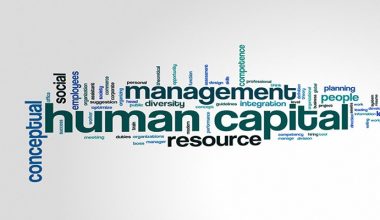Managers see work motivation as an integral part of the performance equation at all levels, while organizational researchers see it as a fundamental building block in the development of useful theories of effective management practice. Indeed, the topic of work motivation permeates many of the sub-fields that compose the study of management, including leadership, teams, performance management, managerial ethics, decision-making, and organizational change. Work Motivation Examples Quotes for Work Motivation Work Motivation Theory
What Is Work Motivation?
Work motivation means the desire or drive within an individual. It is a psychological force that controls human behavior and causes people to act, set goals, and achieve them. Motivation is the driving force behind an individual’s actions. Motivation in the workplace is defined as something that energizes employees to bring commitment, enthusiasm, a high energy level, and creativity to the organization daily.
Employee motivation creates a willingness among themselves to produce results to the best of their abilities. Managers should not use their motivational factors to manipulate employees because people resist being coerced into certain behaviors. Rather than manipulating employees in the business, managers should focus on fully appreciating employees for their work. Making employees feel that they are in on things, and offering sympathetic help to their problems.
Work motivation is one of the most central and highly researched topics in psychology. Even the earliest textbooks in I/O psychology addressed motivation and topics related to it, such as morale, job attitudes, productivity, and job performance.
It is also important to distinguish between work motivation, its antecedents, and its consequences, particularly the latter. Observers often conclude that a person’s motivation is low (usually implying not enough effort) or misguided (inappropriate goals) on the basis of observing low standards of performance, which is the accomplishment of some standard or criterion.
This conclusion is often false, resulting in what social psychologists refer to as the “fundamental attribution error”—attributing low-judged performance to low motivation, a characteristic of the individual. Considerable research and theory show that performance is a multiplicative function of motivation and individual ability as well as the constraints or opportunities offered by the context in which work is occurring.
Work Motivation Examples
Work motivation examples come in two ways:
#1. Intrinsic Work Motivation
Intrinsic motivation comes from within. It’s driven by close-held beliefs and values, such as acceptance, honor, desire to achieve, and curiosity. In other words, intrinsic motivation is all about what makes you feel good without an external reward.
Intrinsic Work Motivation Examples
There are a few ways someone can demonstrate intrinsic motivation, but a few examples include:
- Going to the gym to lose weight
- Improving your diet
- Learning new skills
- Playing games or sports for fun
- Helping someone with no expectation of reward
- Donating to or volunteering with a charity
#2. Extrinsic Motivation
If intrinsic motivation is all about internal motivators, it shouldn’t surprise you to learn that extrinsic motivation is triggered by external factors: rewards, recognition, or avoidance of punishment.
Extrinsic Motivation Examples
- Monetary rewards, such as bonuses, raises, and/or other perks
- Societal expectations (for example, buying the latest smartphone or designer clothing)
- Students studying to impress their parent(s)
- Fear of losing your job if you’re consistently late or absent from work
- Parking in a designated area to avoid fines
Work Motivation Theories
We’ve selected three high-profile theories that offer an interesting take on what motivates different individuals: Maslow’s Hierarchy of Needs, McClelland’s Three Needs Theory, and Herzberg’s Motivation Theory
#1. Maslow’s Hierarchy of Needs
One of the often-cited theories of work motivation is Maslow’s Hierarchy of Needs Theory. This motivational theory, developed by Abraham H Maslow, says that humans have a hierarchy of needs and they work their way up through these needs. As each need is satisfied, they move on to the next.
Five Needs in Maslow’s Theory of Work Motivation
- Physical: the lowest need is for the fundamental basics – food, clothing, and shelter. These needs closely correlate to a person’s salary.
- Security: the need to feel safe. This could translate to a feeling of job security and even simply needing to be in a safe work environment.
- Social: the need to belong to a group. Humans are social animals, they will seek to form groups and want to feel like a valued members of that group.
- Ego: to achieve recognition or status. Individuals will look to feed their ego or boost their self-esteem by being successful in their job.
- Self-actualization: once an individual has ticked all the other needs off, they will move into a stage where they become more creative or growth-oriented.
#2. McClelland’s Three Needs Theory
David McClelland’s motivation theory of management suggests that each person has three basic needs: need for power, achievement, or affiliation. In this employee motivation theory, McClelland says that a person’s particular need will have a significant impact on their behavior.
- Need for Power: this person is motivated by having a position of power or control. They are typically strong leaders and are self-disciplined.
- Need for Achievement: this person is motivated by success or achieving objectives. They thrive on challenging situations and typically set themselves hard to reach goals and work to excel at them.
- Need for Affiliation: this person is at home in a group or collaborative environment. They work well with others and seek out social interactions.
#3. Herzberg’s Motivation Theory
Herzberg’s Motivation Theory, which is also known as Two-Factor or Hygiene Theory, is another one of the more renowned employee motivation theories. It suggests that individuals have two categories of needs when it comes to working hygiene and motivators. Hygiene refers to a person’s work environment, including working conditions, wages, and workplace relations while Motivators are the factors that motivate people to work harder – job recognition, promotion, and achievement.
Herzberg affirmed that if people are not happy at work, it comes down to the work environment, and when they are happy at work it’s because they feel fulfilled or motivated.
What Makes Motivation So Crucial?
It is in a company’s best interest to maximize employee engagement and motivation given the advantages of having a highly engaged staff.
The top five results of workplace motivation improvement are as follows:
#1. Improved Efficiency
A motivated worker will give it their all and often deliver better results. The maximum performance of a person can be distinguished from their average performance.
When people are motivated, the differences between the two are minimal. That indicates that they consistently give their best effort. But, when motivation is low, workers rarely provide their best effort.
#2. Enhanced Staff Involvement
Employees who are more motivated often have higher levels of engagement with their jobs.
This implies that businesses will note:
- reduced churn and absenteeism
- better communication between coworkers
- enhanced client services
#3. Enhanced Problem-Solving, Ingenuity, and Creativity
Employees who are motivated are more innovative and creative as well as better problem solvers.
They invest more energy in these activities because they work with greater passion and feel a connection to the work they are doing.
Motivated workers adopt new behaviors and are inventive and adaptable in their search for solutions when faced with obstacles. They are able to get past inconveniences as a result.
#4. Enhanced Work Satisfaction
Higher levels of job satisfaction are reported by employees who are more motivated. More contented workers are more effective, produce more, and care more about what they’re doing.
#5. Improved Staff Wellbeing
Motivated workers report higher levels of well-being and improved mental fitness. Their physical and mental health both improve when they are motivated and enthusiastic about their profession.
In actuality, this connection starts to cycle.
A greater sense of well-being is correlated with greater motivation. Also, raising employee motivation results in enhancing their well-being.
Low Motivation at Work Spirals Downward
Managers can use inspiration at work as a tool, and inspiring people is an essential leadership quality. Let’s think about the effects of a demoralized workplace. There are additional expenses in addition to losing the aforementioned advantages.
#1. Decreased Effectiveness
Due to higher prices, lower-quality labor, and lost revenue prospects, this hurts right now. Yet it also causes long-term harm. That’s because organizations with demotivated workers are ill-equipped to adapt to shifting circumstances.
Their workforce will be less flexible and prepared for the future, making them less able to seize new chances.
#2. Less Involvement among Employees
Low levels of employee engagement cause:
- increased turnover
- Absenteeism
- reduced client satisfaction
- Possibly more events and disagreements among employees
#3. Decreased Creativity and Innovation
There will be fewer fascinating possibilities or challenges as a result of decreased creativity and ideas. This limits the organization’s capacity for creativity and innovation.
#4. Reduced Job Satisfaction
This hinders hiring and retention efforts and may result in problems with safety and quality.
#5. Insufficient Drive
Both a lack of motivation and a lack of motivation can spread easily. If ignored, a small number of unmotivated team members can demotivate those around them.
Others can start to doubt their own abilities to work so hard or the team’s capacity to produce impact with such little dedication.
Quotes for Work Motivation
Here are some quotes for work motivation:
- -All our dreams can come true if we have the courage to pursue them.” —Walt Disney
- -“The secret of getting ahead is getting started.” —Mark Twain
- -The best time to plant a tree was 20 years ago. The second best time is now.” ―Chinese Proverb
- -“Only the paranoid survive.” —Andy Grove
- -“It’s hard to beat a person who never gives up.” —Babe Ruth
- -“I wake up every morning and think to myself, ‘How far can I push this company in the next 24 hours.’” —Leah Busque
- -“If people are doubting how far you can go, go so far that you can’t hear them anymore.” —Michele Ruiz
- -“We need to accept that we won’t always make the right decisions, that we’ll screw up―understanding that failure is not the opposite of success, it’s part of success.” ―Arianna Huffington
What Is a Good Motivation for Work?
Having a sense of duty, a place to go, and things to accomplish and achieve is a great motivation. Having a sense of duty is necessary for the development of a strong identity. It also provides us with an important role to fulfill that is backed by strong values.
What Is Meant by Work Motivation?
The desire or willingness to make an effort in one’s work. Motivating factors may include salary and other benefits, desire for status and recognition, a sense of achievement, relationships with colleagues, etc.
What Are Your 3 Main Motivations at Work?
The 3 main motivations at work are:
- Meeting deadlines, targets, or goals.
- Mentoring and coaching others.
- Learning new things.
What Are the 4 Types of Motivation?
Here are the 4 types of motivation:
- Incentive motivation
- Fear motivation
- Power motivation
- Social motivation
What Are the 4 Basics of Motivation?
Our personal drive to improve and achieve, commitment to our goals, initiative, or readiness to act on opportunities, as well as optimism, and resilience
What Are the Best Motivations?
Intrinsic motivation is generally more effective than extrinsic motivation.
Conclusion
Several theories view motivation theory as an attempt to satisfy needs. Based on this approach, managers would benefit from understanding what people need so that the actions of employees can be understood and managed. Other theories explain motivated behavior using the cognitive processes of employees. Employees respond to unfairness in their environment, they learn from the consequences of their actions and repeat the behaviors that lead to positive results, and they are motivated to exert effort if they see their actions will lead to outcomes that would get them desired rewards. None of these theories is complete on its own, but each theory provides us with a framework we can use to analyze, interpret, and manage employee behaviors in the workplace.
Related Articles
- 5 Events That Boost Entrepreneur Motivation
- CAREER GOALS: Best Goals and How to Write It
- HUMAN RESOURCE MANAGEMENT SYSTEM: Detailed Guide to the use of HRMS
- SERVICE BUSINESS: Best 2023 Ideas to Start Now!!!
- WHAT IS INTRINSIC VALUE: Meaning, Examples & How to Calculate It






